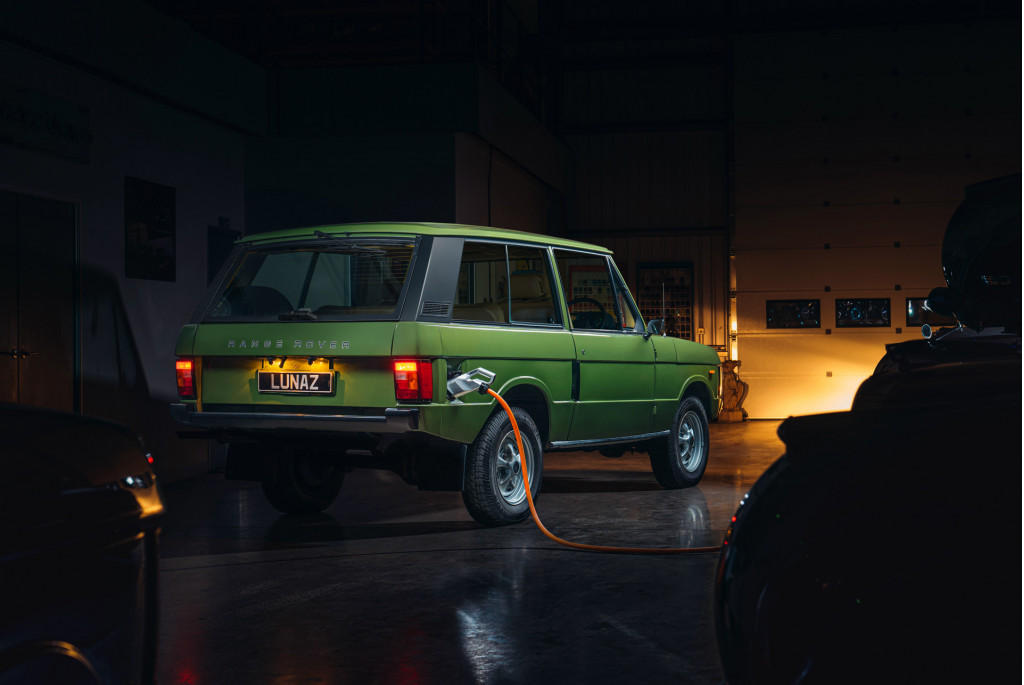Welcome to this week’s FC Throwback, where we take a look back at some of our favourite previous feature cars. This week it’s David Brodie’s tuned Ford Sierra Cosworth from 2014…
Feature taken from Fast Car magazine. Words Dan Williamson Photos Michael Whitestone

When you’re an ex-BTCC racer who also happens to run one of the most respected tuning firms in the UK, your own track toy is going to be something rather special… “This is the fastest saloon car in England, possibly even Europe” a bold statement like this should really be backed up by hard facts, indisputable proof and a solid competition pedigree.

So it’s perhaps a good job that the man making these spirited claims is veteran race ace, David Brodie (AKA Brode) – a motorsport legend with almost 50 years in the bucket seat, 800 races under his overalls, innumerable wins, and a history of driving RS500 touring cars in the days when BTCC stood for ‘bloody terrific car control’.

Not only that, but Brode established renowned tuning firm BBR (Brodie Brittain Racing – one of the premier Cosworth modifiers), and reckons he’s tweaked a huge amount of cars since 1982.

The bewinged, big-arched, badass beast on these pages was developed and built by Brode over the last 20-or-so years. It’s his personal track toy, it’s pretty much his pride and joy, and it’s the pinnacle of his Sierra development. What more could you ask for? “We refurbished the Sapphire two years ago,” says Brode. “I was sick of these smart-arses in Cosworths talking big. I thought I’d show them how to do it.”

A circuit-scraping sports car built around a Ford body and floorpan, Brode’s Sapphire is still very much recognisable as an Eighties’ icon – albeit pumped up into a muscular motorsport machine. The fibreglass wheelarches house massive magnesium BBS split-rims, half the suspension is scratch-built, and under the bonnet sits 568bhp of mighty YB grunt. “The car was £130,000 to £150,000 to build back then – we don’t muck about – and in today’s money would be a quarter of a million quid,” explains Brode.

A dry sump system means the YB sits scraping the floor (for a lower centre of gravity), there’s a modified T4 turbo, fabricated tuned-length manifold, straight-through 4in stainless system, separate coil packs, secret-spec American injectors, hand-made BBR inlet and Secan intercooler. “It’s designed for fighter planes,” says Brode, “and it’s small but incredibly efficient. The intercooler core alone was £4300 when we bought it in the mid-90s…

This is probably the best Cosworth engine ever built. It revs to 9500rpm, and we measured 568bhp,” smiles Brode. So you’d expect this thing to be rapid, but even seasoned racer Brode was blown away by its staggering performance, “I don’t use full power on the straights because it would spin the wheels, and I reckon it will be four or five seconds a lap faster than my black RS500 – and nothing can live with that. It would slaughter a modern BTCC car,” he smiles.

“It’s the best rear-wheel drive saloon car in England. It’s the fastest thing I’ve ever driven.” A bold statement, but then that’s Brode all over – a big personality and a truly awesome car.

TECH SPEC SIERRA COSWORTH
tuning
Ford Cosworth YB 1993cc four-cylinder with new Cosworth block, silent block rubber mounted to chassis, lightened crank, steel rods, BBR high-compression forged pistons, dry sump system, ported big-valve doweled cylinder head, special cams, solid tappets, hand-made BBR inlet, modified T4 turbo, tuned-length manifold, 4in stainless straight-through exhaust system, Secan 14x12in intercooler, quad coil packs, Pectel ECU, secret-spec American injectors, 600bhp fuel system, BBR breather system, BBR water system with swirl pots, propshaft-driven alternator, rear-wheel drive with Hewland six-speed gearbox, hydraulic AP Racing paddle clutch, custom balanced two-piece propshaft, Ford 9.5in differential, 4:1 final drive ratio, custom heat-treated driveshafts
chassis
Bilstein coilovers, custom BBR cast aluminium uprights, hubs and rear ladder wishbones, AP Racing 356mm discs and 6-pot calipers front, twin-caliper front mountings, 300mm rear discs, BBS magnesium centre-lock split-rims, 10×18 front and 12x18in rear, Dunlop race slicks
exterior
Seam-welded Sierra Sapphire bodyshell with original floorpan, foam-filled cavities, rear doors welded shut and blended to bodywork, extended Cosworth bumpers, wide fibreglass wheel arches blended into wings, fibreglass vented bonnet, blade rear wing on alloy struts, polycarbonate windows
interior
Stripped interior, single race seat, repositioned steering column, custom roll cage with suspension mountings, mid-mounted battery and rubber fuel cell, Premier fuel system in luggage compartment
thanks
Neil McKay at BBR GTi 01280 700700, www.davidbrodie.co.uk








